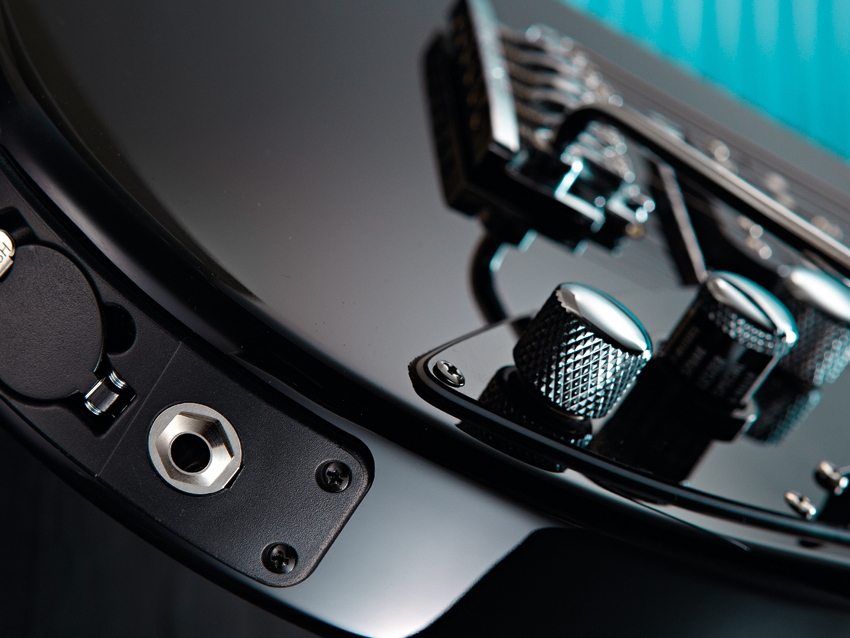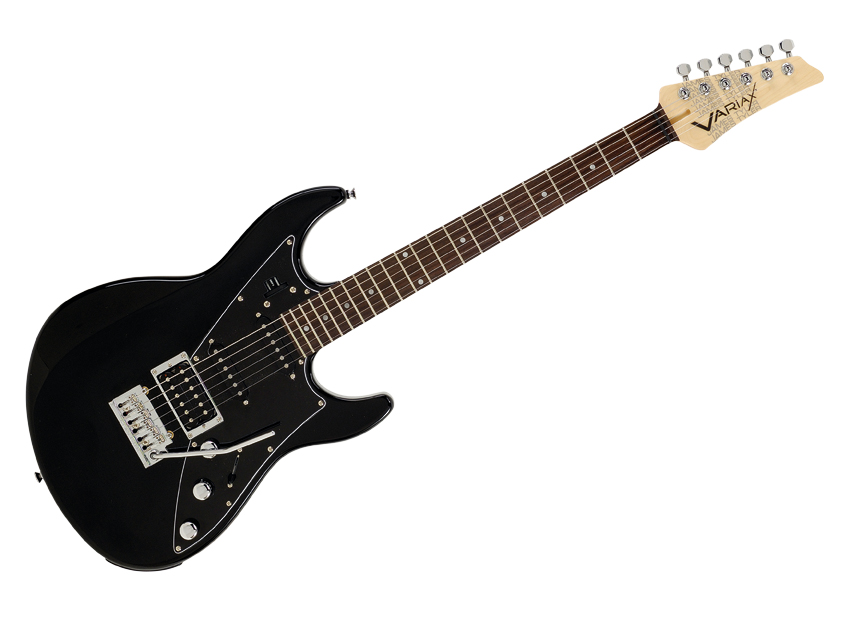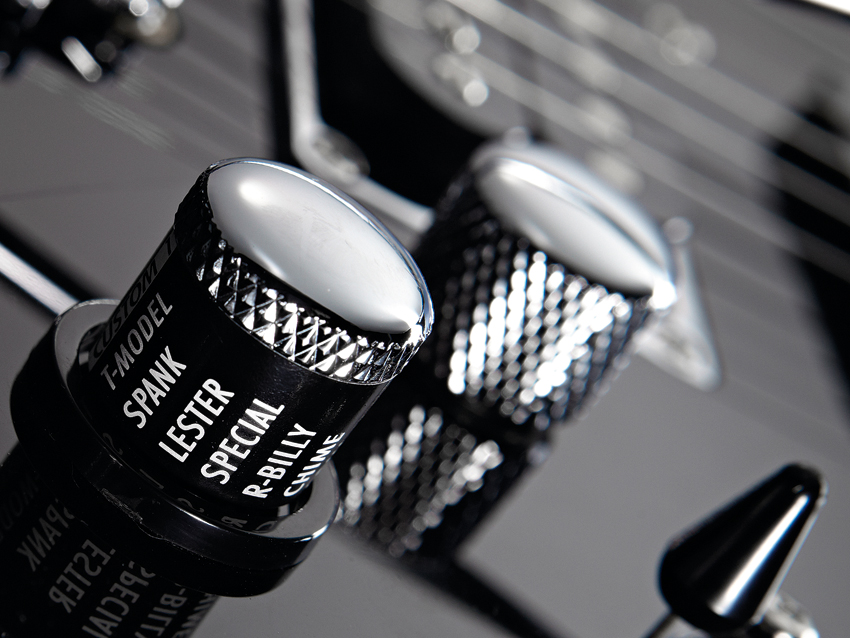MusicRadar Verdict
The 69's vibrato just adds to the accuracy of some of the modelling sounds; the Fender Stratocaster and Gretsch G6120 settings being a prime example.
Pros
- +
Modelling sounds, natch; excellent vibrato system; the chunky neck.
Cons
- -
Rough finish patches on the neck; top nut could be cut better.
MusicRadar's got your back

Line 6 James Tyler Variax JTV69

Line 6 James Tyler Variax JTV69

Line 6 James Tyler Variax JTV69
Like its US-made big brother, the new Korean JTV69 can nail its flag to the mast of the good ship Stratocaster - it's as plain as the nose on your face.
The maple neck, which is bolted to an alder body via a rounded and tapered heel, shares the same bountiful but manageable '59 profile as the set-in number on the JTV59. The 69 has 22 jumbo frets and the same fingerboard radius too.
"The JTV69's Variax stuff is neatly split between the model selection knob situated between the volume and tone controls, and the alternate tuning selector lurking close to the neck single-coil pickup."
We do have a couple of gripes regarding the neck. The satin finish is a bit rough in places and the top nut slots could be cut a bit lower. Pushing the strings down at the first fret takes a little more effort than we'd prefer. But these are just two pimples on the otherwise perfectly clear complexion of the JTV69's build quality.
The 69's H/S/S format pickups are manipulated via a master volume and tone and a five-way blade switch. The five options are: bridge humbucker; bridge humbucker full and middle single-coil; middle pickup only; middle and neck together; and neck single-coil solo.
Moving on, the JTV69 is packing a floating two-pivot vibrato unit - with a little pull back on offer - and a set of locking tuners. The Variax stuff is neatly split between the model selection knob situated between the volume and tone controls, and the alternate tuning selector lurking close to the neck single-coil pickup.
As this is a Variax, so you get access to an onboard arsenal featuring classic electrics (a '60 Tele Custom, '59 Stratocaster, '58 Gibson Les Paul Standard, '59 Gretsch 6120 and '66 Rickenbacker 360-12), jazz boxes (a '57 Gibson ES-175 and '53 Gibson Super 400), iconic acoustics (a '59 Martin D-28, '95 Gibson J-200 and a '35 Dobro Alumilite) and a couple of quirky items (the Coral/Dano Elektrische Sitar and a Gibson Mastertone banjo).
Alternative tunings are also on tap, which include standard, drop D, a half step down, drop Db, one full step down, DADGAD, open D, blues G, reso G, open A and baritone.
Sounds
Getting to grips with a Variax is pretty intuitive. That's one of the reasons the technology has survived the past 10 years: it's easier to use than the competition.
And it sounds great too. We raved about the improvement in the sounds of the next generation Variax when we tried the US JTV69 back in the day, and obviously, with the Korean models carrying the same brilliant seed we're just as impressed. In a way we're even more blown away given the substantial difference in price with the new JTVs and the American jobs.
You'll probably have to take some of the Variax modelling sounds at face value. While the Strat, Les Paul and banjo models are easy to place, some of us won't know what the neck pickup on a 1968 Fender Telecaster Thinline or 1976 Gibson Firebird V is supposed to sound like. The same applies to the subtle difference between a 1959 Martin D-28 and a 1967 Martin 0-18.
In those cases you have to enjoy the sounds for what they are; appreciate how they sound in the mix. If the '59 Strat doesn't work, try the fatter-sounding Danelectro 3021 modelled with both pickups engaged.
We do find the 12-string and detuned settings still sound a bit synthetic here but they are dramatically improved in a mix. The acoustic sounds benefit from the sympathetic frequency range of an acoustic guitar amp or PA system.
The banjo model is as brilliant as the Coral sitar is bonkers. If the closest you've ever got to a sitar is having fret buzz on your guitar then you're in for a treat.
The Variax has always been an indispensable tool for the right player. That means studio and club guitarists looking for instant access to myriad tones and alternate tunings.
A facelift and magnetic pickups can't really change an instrument's demographic. We reckon that many existing Variax fans will upgrade to the Korean models, but the JTVs prove the Variax concept has not only stood the test of time, it's looking good for another decade at the top.
“A synthesizer that is both easy to use and fun to play whilst maintaining a decent degree of programming depth and flexibility”: PWM Mantis review
“I feel like that song had everything we needed to come back with”: Bring Me The Horizon’s Lee Malia on Shadow Moses, its riff and the secrets behind its tone, and why it was the right anthem at the right time
“I said, ‘Are we sure we can write a song about death?’”: The story of Mike + The Mechanics' classic No.1 The Living Years









